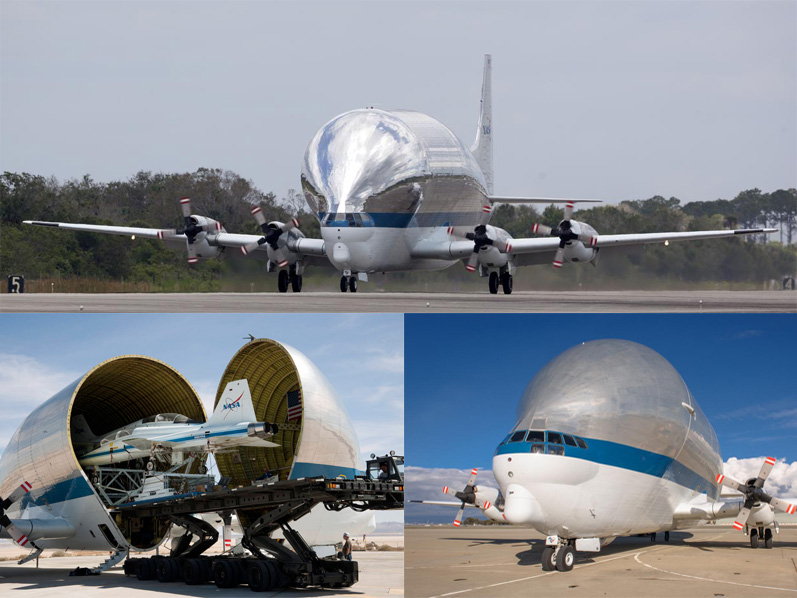The NASA Super Guppy aircraft impresses with its extraordinary appearance, attracting the eyes of aviation enthusiasts and connoisseurs of space technology. This week, it played an important role when it transported the heat shield used during the Artemis I mission. This important element, designed to protect the Orion spacecraft during deceleration in the Earth’s atmosphere, was transported from NASA’s Kennedy Space Center in Florida to the Marshall Space Flight Center in Alabama.
In a video released by NASA, you can see how Super Guppy arrives at the Huntsville airport. This aircraft, first used to transport sections of the Saturn V rocket during the Apollo program, is now planned to be used in preparation for the future Artemis II mission.
Super Guppy impresses not only with its history but also with its design. The original Guppy was created in the 1960s by Aero Spacelines based on the Boeing Stratotanker refueling aircraft. Later, a larger modification was built with a cargo compartment with a diameter of 7.62 m and a folding nose to facilitate loading.
Welcome (back) to HSV, Super Guppy! This unique visitor is always a sight to see! #FlyHSV #SuperGuppy pic.twitter.com/9SBAd76COs
— Huntsville International Airport (@FlyHSV) November 7, 2023
The latest version of the aircraft, the Super Guppy Turbine, was commissioned in 1970. Since then, it has continued to amaze with its uniqueness and unsurpassed functionality. It is also the only Guppy family aircraft that is still in operation: the other three models are on display in museums, and one was destroyed. NASA acquired it in 1997 from Airbus, after which it became a key element of their transport fleet. As a replacement for the company’s own needs, the Beluga model was built.

Despite its clumsy appearance, Super Guppy is very useful for the aviation and space industry, as it is used where other vehicles have physical limitations. Due to its huge size, this aircraft provides efficient and economical transportation of oversized cargo that cannot be transported by land due to obstacles in the form of tunnels and bridges.
All these features make the aircraft an indispensable element in the infrastructure of space programs. It continues to amaze not only with its history but also with its relevance, demonstrating how innovations from half a century ago can serve modern needs in space.
Earlier we reported on how a trio of Orion spacecraft are being equipped for the moon.
According to digitaltrends.com
Follow us on Twitter to get the most interesting space news in time
https://twitter.com/ust_magazine

